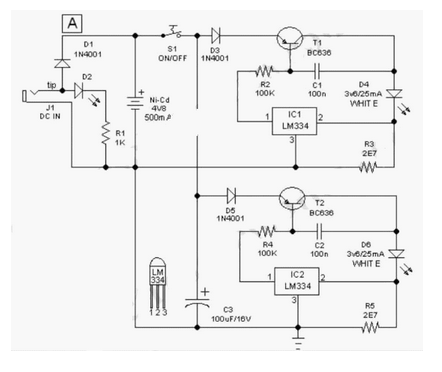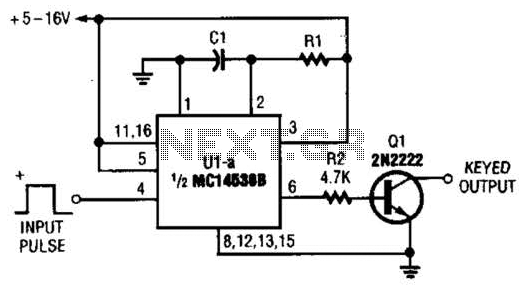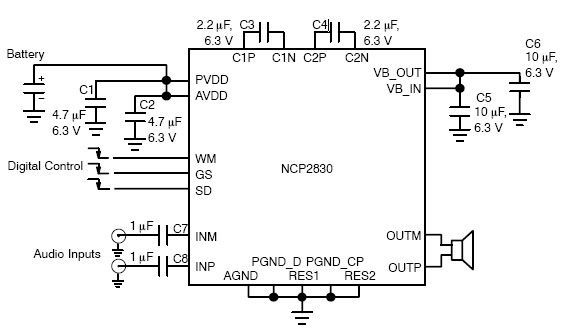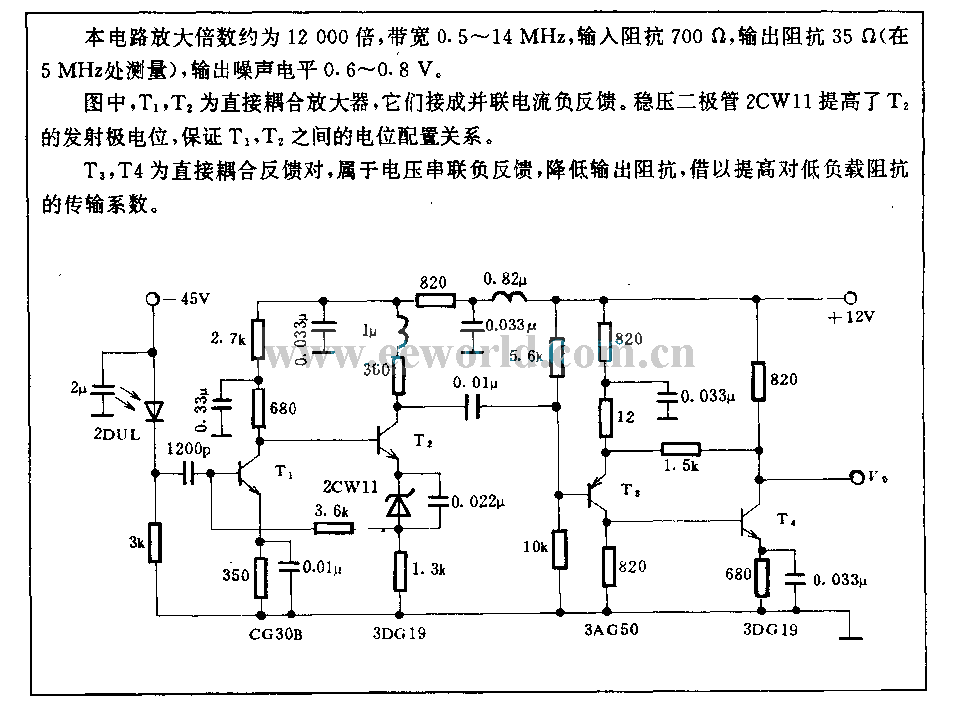
Circuit Project: A Handy Pen Torch

This easy-to-construct "Handy Pen Torch" electronic circuit has a low component count and utilizes two power white LEDs for lighting. It operates on a low voltage supply of 4.8V DC.
The Handy Pen Torch circuit is designed to provide a compact and efficient lighting solution using minimal components. The circuit primarily consists of two high-brightness white LEDs that serve as the light source. These LEDs are connected in parallel to ensure even illumination and to maintain brightness even if one LED fails.
The power supply for the circuit is a low-voltage source, specifically designed to operate at 4.8V DC. This voltage can be achieved using four AA batteries in series, which provides a total voltage of 6V. A simple voltage regulator or a resistor can be employed to drop the voltage to the required 4.8V, ensuring the LEDs operate within their specified voltage range for optimal performance.
The circuit's simplicity allows for easy assembly, making it suitable for both beginners and experienced electronics enthusiasts. The low component count not only reduces the overall cost but also minimizes the size of the circuit, making it ideal for portable applications. The Handy Pen Torch can be housed in a lightweight, durable casing, which can be easily integrated into a pen-style body for convenient use.
To enhance the efficiency of the circuit, it is advisable to use current-limiting resistors in series with each LED. This prevents excessive current from flowing through the LEDs, thereby extending their lifespan. The value of the resistors can be calculated using Ohm's law, taking into account the forward voltage drop of the LEDs and the supply voltage.
Overall, the Handy Pen Torch circuit exemplifies a practical and efficient lighting solution, combining ease of construction with effective functionality.This easy to construct “Handy pen torch†electronic circuit and low component count, uses two power white LEDs for lighting. Low volt (4.8V dc) supply ava.. 🔗 External reference
The Handy Pen Torch circuit is designed to provide a compact and efficient lighting solution using minimal components. The circuit primarily consists of two high-brightness white LEDs that serve as the light source. These LEDs are connected in parallel to ensure even illumination and to maintain brightness even if one LED fails.
The power supply for the circuit is a low-voltage source, specifically designed to operate at 4.8V DC. This voltage can be achieved using four AA batteries in series, which provides a total voltage of 6V. A simple voltage regulator or a resistor can be employed to drop the voltage to the required 4.8V, ensuring the LEDs operate within their specified voltage range for optimal performance.
The circuit's simplicity allows for easy assembly, making it suitable for both beginners and experienced electronics enthusiasts. The low component count not only reduces the overall cost but also minimizes the size of the circuit, making it ideal for portable applications. The Handy Pen Torch can be housed in a lightweight, durable casing, which can be easily integrated into a pen-style body for convenient use.
To enhance the efficiency of the circuit, it is advisable to use current-limiting resistors in series with each LED. This prevents excessive current from flowing through the LEDs, thereby extending their lifespan. The value of the resistors can be calculated using Ohm's law, taking into account the forward voltage drop of the LEDs and the supply voltage.
Overall, the Handy Pen Torch circuit exemplifies a practical and efficient lighting solution, combining ease of construction with effective functionality.This easy to construct “Handy pen torch†electronic circuit and low component count, uses two power white LEDs for lighting. Low volt (4.8V dc) supply ava.. 🔗 External reference





